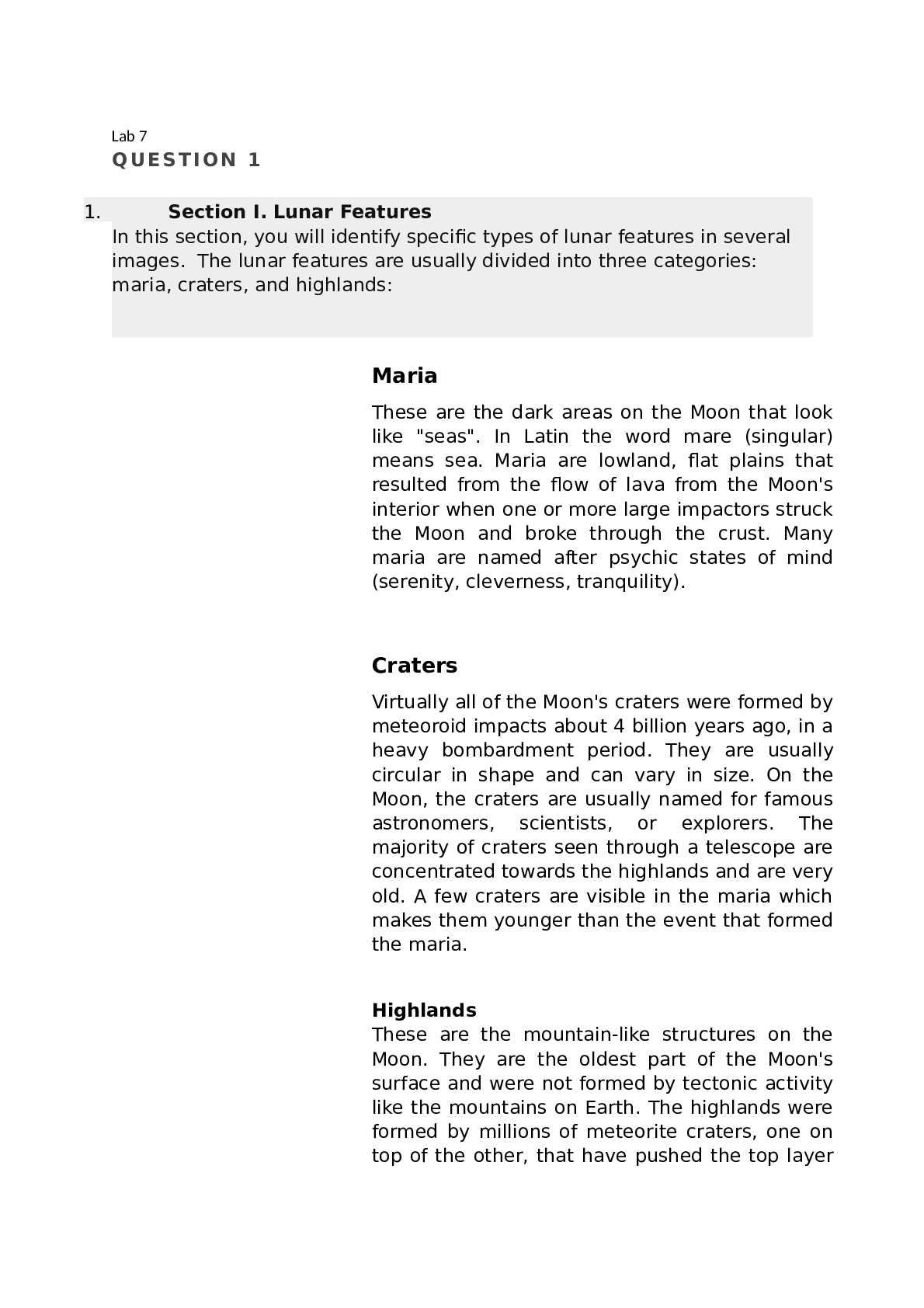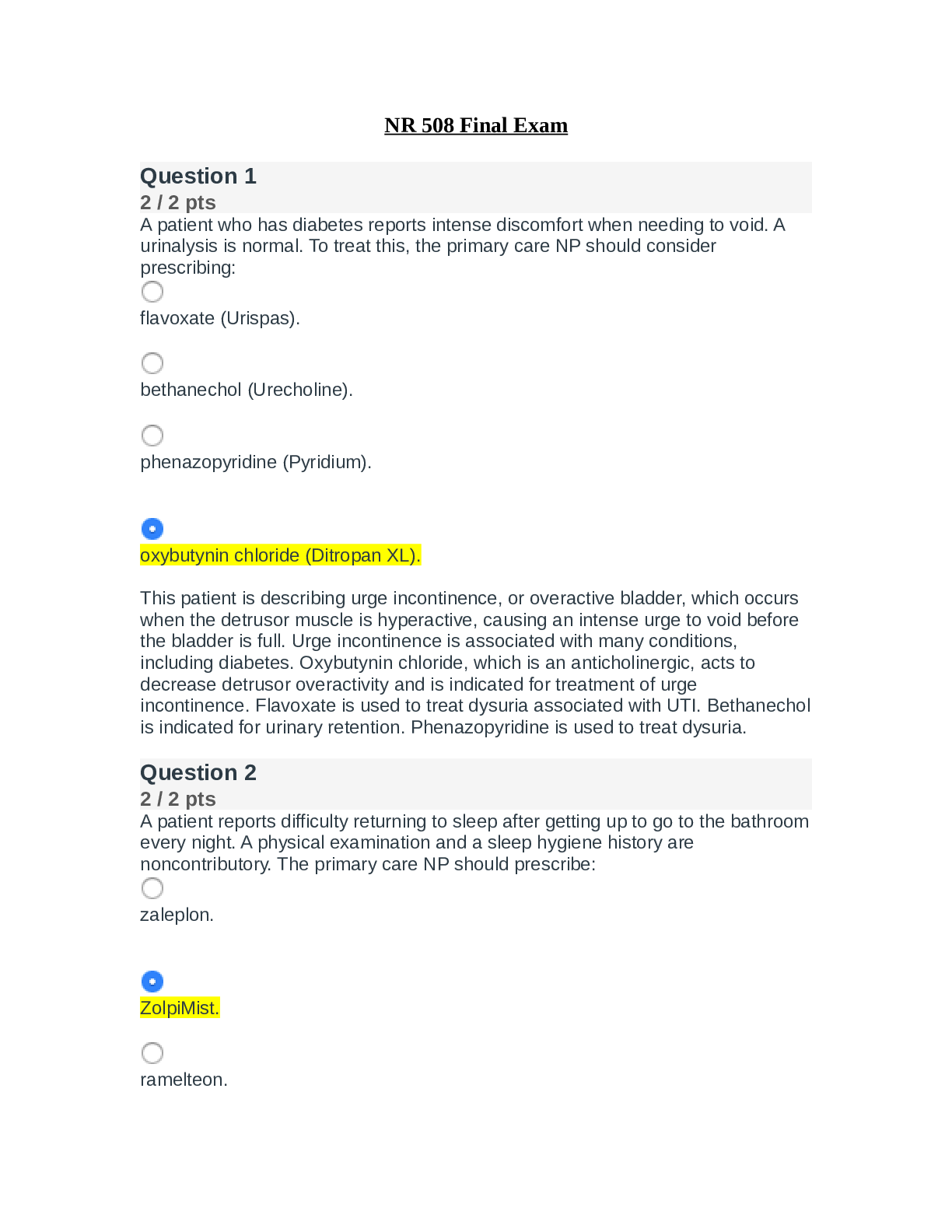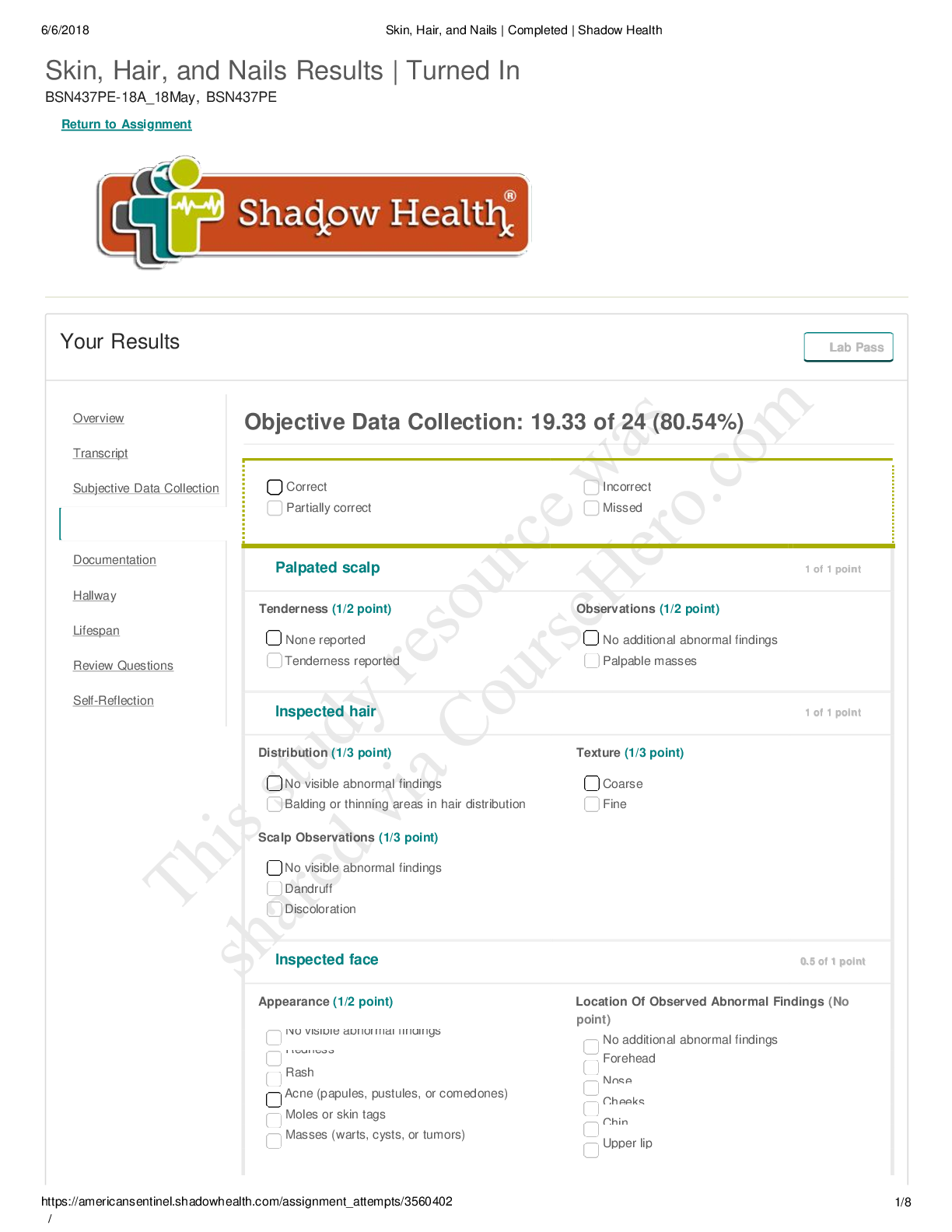Physics > Lab Experiment > Collin College PHYS 1403 Lab 7; APPARENT & ABSOLUTE VISUAL MAGNITUDE (All)
Collin College PHYS 1403 Lab 7; APPARENT & ABSOLUTE VISUAL MAGNITUDE
Document Content and Description Below
PHYS 1403 Lab 7: APPARENT & ABSOLUTE VISUAL MAGNITUDE Worksheet PRELAB QUESTIONS 1. The apparent visual magnitude of Canopus is –0.6 and that of Hadar is +0.6. Which star is brighter? How do y... ou know? Canopus would be the brighter star because it has a smaller apparent visual magnitude. 2. What is the absolute visual magnitude of a star? Absolute visual magnitude determines the brightness of a star at 10 parsecs from earth. 3. Epsilon Eridani has an apparent visual magnitude of + 3.7. Will it will be visible with the naked eye? How do you know? Yes, the human eye can detect an mv of up to 6.0. 4. Ross 128 has an apparent visual magnitude of +11.1. Will it will be visible with the naked eye? How do you know? No, the human eye can detect an mv of only up to 6.0. 5. Ross 128 is 3.4 parsecs from us. If it were moved to 10 parsecs, would it appear brighter or dimmer? Why? Moving Ross 128 from 3.4 parsecs to 10 parsecs would make it appear dimmer because it is moving further away. EXERCISE In this lab, we will use Stellarium find information about individual stars. First, you will need to start the program. After the program has started, move your cursor to the left side of your screen to bring up the vertical menu, and click the “Sky and viewing options window” icon. Click the “Sky” tab, and un-check the box that says “Show atmosphere”. Daylight should fade and stars should now be visible (although the sun may still be displayed in the sky). You can move around by simply clicking on the screen and moving the mouse. We also need to remove the ground from the screen. To do this, 1open the Sky and viewing options window again, and click on the “Landscape” tab. Now, un-check the boxes labeled “Show ground” and “Show fog”. This should remove the ground from the screen. Close the Sky and viewing options window, and now you are ready to start the exercise. Part A – Collect, manipulate, graph, and analyze data. Use analysis to evaluate a hypothesis. Let’s test a hypothesis suggested by a know-it-all friend. You know from your studies in Astronomy that this hypothesis is not correct, but you have the task of convincing your friend. Your friend insists on the Hypothesis that: “A star is a star. All stars have the same intrinsic brightness. The reason why they appear to have different magnitudes is because they are at different distances from the Earth. This means a star close to the Earth will always be brighter than a star far away. Therefore, knowing the apparent visual magnitude of a star tells you the distance that star is from the Earth.” 1) Below in Data Table 1 is a list of 22 of the brightest stars in the night sky. To test your friend’s hypothesis, we will use Stellarium to gather information on this group of stars. First, open the “Search window” from the vertical menu on the left side of the screen. To find an object, simple type the name of the object in the box, and press “Enter” on your keyboard. Stellarium will automatically move your view over to that object. The first star in Data Table 1 is Sirius. Type this star name in the box in the Search window and press “Enter”. Stellarium should now move to Sirius. Information on this object is displayed in the upper left corner of the screen. Use this method to find and record the distance, apparent magnitude mv (Stellarium refers to this as just “Magnitude”), and absolute magnitude Mv for each star in Data Table 1 – stars Sirius and Spica have been entered and calculated for you as examples. Calculate the distance in Parsecs (pc) using the conversion: 1 pc = 3.26 ly. Data Table 1 Star Distance (ly) Distance (pc) mV MV Sirius 8.6 2.64 -1.45 1.44 Canopus 309.15 94.8 -0.65 -5.53 Rigil Kent 4.39 1.21 0.1 4.45 Arcturus 36.71 11.26 0.15 -0.11 Vega 25.04 7.68 0.00 0.57 Capella 42.80 11.79 0.05 -0.54 Rigel 862.85 237.70 0.15 -6.96 Procyon 11.41 3.14 0.40 2.68 Betelgeuse 497.95 171.18 0.45 -.5.47 Achernar 139.44 38.41 0.45 -2.70 [Show More]
Last updated: 1 year ago
Preview 1 out of 11 pages

Reviews( 0 )
Document information
Connected school, study & course
About the document
Uploaded On
Jul 05, 2021
Number of pages
11
Written in
Additional information
This document has been written for:
Uploaded
Jul 05, 2021
Downloads
0
Views
96












.png)


.png)












.png)







